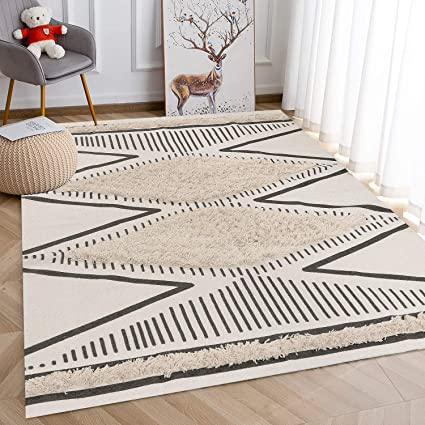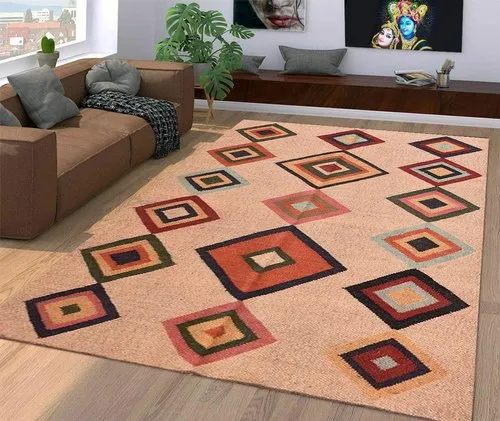Middle Eastern patterns naturally attract the attention of your guests, and if used in the right way, can draw them to other elements of your room. The patterns draw attention in one direction, indicating a clear direction and guiding them to the elements that you want to draw attention to.
Colorful Fabrics
When incorporating Middle Eastern patterns into your design, remember to use color variations that reflect the area’s culture. For example, the dominant color in a pattern might be red, which is often used to reflect the heat of the sun. Other colors such as blue are often used as accents.
Geometric patterns are also popular among Middle Eastern designs. They can be incorporated into your design by using them as accents on your furniture, including curtains, valences, and a canopy. Colorful fabrics are also a staple of Middle Eastern design. You can use them as sheer curtains, valences, and even as a canopy.
Middle Eastern rugs are works of art and are often considered accent pieces for your design. They add a personal touch to any home and allow viewers to fully appreciate their design. They also serve as great wall art. For your design to incorporate these unique pieces, you need to decide on the purpose of the room.
Geometric Patterns

One of the most beautiful and enduring forms of geometric boho rug patterns in the world comes from the Middle East. These geometric patterns are often based on generative tessellations, which are composed of polygonal elements. These patterns are also often repeated and can be produced by a variety of different methods.
Geometric patterns found in the Middle East have been used for centuries as decorative elements. They have been used on ceilings, walls, and doors. Some of these patterns have even graced mosque domes and minarets. Unfortunately, there are no clear guidelines about the proper use of these patterns. This results in improper application and a lack of architectural matching.
Polygonal tessellations are very flexible and can be used to create a variety of different designs. In addition to these traditional patterns, you can also find generative patterns made of irregular polygons.
Rugs
Incorporating Middle Eastern patterns into your design can be a great way to add a personal touch to your space. The beauty of Middle Eastern patterns is that they are timeless. They are intricately organized and bring a sense of order to a room. Adding a rug with this style can be a great way to create a design centerpiece and incorporate a beautiful pattern into your space.
The first thing to remember when choosing Middle Eastern patterns for your home is to match them with the theme of the room. Try to match them with a theme that emphasizes elegance and prestige. You should also avoid placing them in a room with a minimalist design. In this way, you can make sure that your rug fits with your overall theme. Just like you check the thread count for bedsheets while purchasing, you also need to look for the rugs whilst you buy one.
Rugs with Middle Eastern patterns can add a touch of exotic flair to your home. These beautiful textiles originated in the Middle East and Central Asia, and their designs are often found in traditional Moroccan and Indian rugs. They are usually made from wool and are used for both decorative and functional purposes. In recent years, these rugs have experienced a resurgence in popularity. Many homeowners have incorporated them into their decor, using them on furniture and as pillows.
Art
Adding Middle Eastern decor to your home is an excellent way to add texture, color, and geometric patterns. You’ll find patterns everywhere, from area rugs to throw pillows and framed wall art. These patterns are surprisingly versatile, so even a minimal room can feature them.
Middle Eastern patterns are ordered and structured, with beautiful lines and elegant contours. They’re also carefully organized and use parallel and feeding shapes to create a harmonious pattern. Moreover, they don’t look like they’ve been thrown together. This is what makes them so attractive and unique.
Middle Eastern rugs are also beautiful works of art and can serve as a great accent piece for your home. They’ll give your home a personal touch, and allow viewers to appreciate the design to its fullest. Whether you’re looking for a unique accent piece or want to integrate the patterns into a larger design, Middle Eastern rugs are a wonderful choice.
Tile Work
One of the easiest ways to incorporate Middle Eastern patterns into your design is through tile work. This type of art involves making tiles with unique shapes and patterns. Using clay, tile work is an inexpensive way to add flair to any room. Tiles can be customized to match your home and design scheme and can be created in an infinite number of designs and patterns.
For a small space, tile work can be quite creative. For example, you can tile a room in a way that gives the illusion of hardwood flooring. If you’re planning to install tile in areas near heat sources, you can create an effect similar to that of hardwood flooring. Tiles also provide the added benefit of durability. This makes them an excellent choice for both interior and exterior spaces.
You can also incorporate patterns from the Middle East into your ceramic tile work. Many Middle Eastern tiles feature beautiful mosaics and ceramic work. These ceramic tiles often feature rich colors and intricate repeating patterns. Many of these patterns are geometric in nature and use lines and shapes to form patterns. Some are even reflective, creating a unique texture.
Rugs As Wall Art
A great way to incorporate Middle Eastern patterns into your design is to use Rugs as wall art. These pieces are considered works of art in their own right and lend a unique personal touch to a room. They also make for beautiful accent pieces in a space.
Whether you’re planning to incorporate these pieces into a traditional or modern setting, Middle Eastern patterns can breathe new life into a tired room. Using colors, textures, and geometric patterns, this style of decor can liven up even the most minimal space. Rugs, throw pillows, and framed wall art can all be used to incorporate this look.
Rugs are also excellent wall art for incorporating Middle Eastern patterns into your design. Many of the rugs in the Middle East have ornaments or designs within their pile. Some have a floral figure in the center while others have geometric shapes in the center. It’s important to remember that the ornaments should flow together, otherwise, the pattern will be distorted.
Conclusion
Geometric patterns, bold colors, and rich textiles – are some of the elements that make up a Middle Eastern design. Despite the fact that you may want to avoid using them altogether, they can still be a nice addition to your layout.

